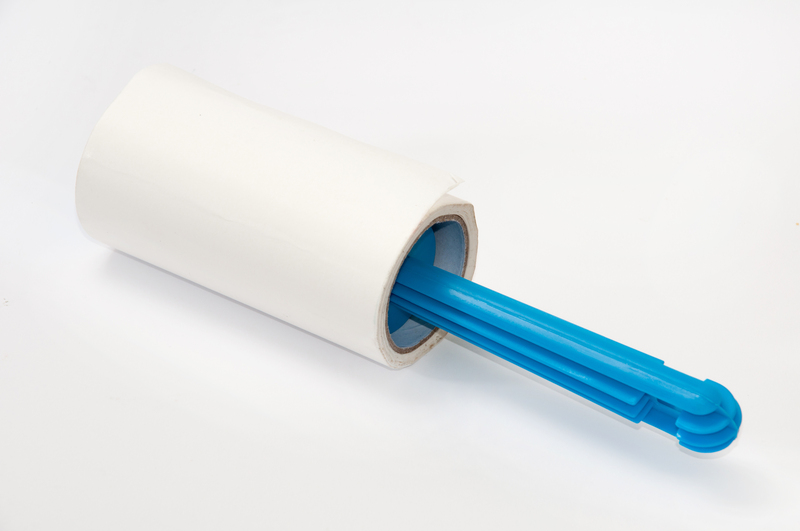Avoid Shrinking: Best Practices for Washing Covers
Posted on 01/10/2025
Avoid Shrinking: Best Practices for Washing Covers
Washing covers - whether for your furniture, pillows, duvets, or car interiors - can be a tricky process. Fabric covers are designed to protect and beautify, but when it comes time for cleaning, one of the biggest frustrations is shrinkage. Nobody wants to put a freshly washed slipcover on their sofa only to discover it no longer fits properly. In this comprehensive guide, we'll explore the best practices for washing covers of all kinds while minimizing the risk of shrinking.

Understanding Why Covers Shrink
Shrinking is not just a minor annoyance - it can ruin the look and functionality of your covers. To master how to wash covers without shrinking them, it's important to first understand why shrinkage occurs.
What Causes Fabrics to Shrink?
- Heat Exposure: Hot water and high dryer temperatures can cause fabric fibers to constrict, leading to significant shrinkage.
- Aggressive Agitation: The tumbling and spinning action in a washer or dryer can tangle up fibers, particularly in natural materials like cotton and linen.
- Moisture and Drying: Fabrics absorb water and swell during washing. Fast drying, especially with heat, can cause them to draw back tighter and shrink as the moisture evaporates.
- Improper Detergents: Harsh or concentrated detergents can damage fibers, making them more susceptible to shrinking or warping.
Natural fibers such as cotton, wool, and linen are more prone to shrinking, while synthetic fabrics like polyester are generally less likely to shrink. However, blends can react unpredictably, so it's crucial to always check the care label before washing any cover.
How to Prevent Covers from Shrinking: General Tips
Below you'll find *expert-backed, actionable strategies* for avoiding shrinkage when washing covers, regardless of the material or style. These strategies apply to slipcovers, cushion or pillow covers, mattress covers, duvet covers, outdoor furniture covers, and more.
1. Read Labels & Follow Manufacturer's Instructions
- Always look for the care label - never skip this step. The manufacturer often recommends the safest water temperature, appropriate detergents, and drying method for that specific fabric.
- Some covers are labeled "dry clean only." Resist the temptation to machine wash, or you risk permanent shrinkage or damage.
2. Wash in Cold Water
- Cold water is universally gentler on fabrics and significantly reduces the risk of shrinking, color fading, and fabric weakening.
- If you must use warm water to remove stains, make sure it is lukewarm and not hot. Test on a small section first.
3. Select a Gentle/Delicate Wash Cycle
- Use the most delicate cycle on your washing machine. This means less agitation and spin force, which helps to preserve the fabric's shape and prevents fibers from tightening up excessively.
4. Use Mild, Fabric-Safe Detergents
- Select a gentle detergent free of bleach, brighteners, or harsh chemicals. These can break down fibers over time, contributing to unwanted shrinkage.
- Check if your detergent is suitable for the specific fabric blend.
5. Do Not Overcrowd the Washer
- Washing too many covers or other heavy items at once can cause friction, stretching, and compression within the machine. This increases the risk of shrinkage and uneven cleaning.
- Wash covers individually or with similar materials whenever possible.
6. Air Dry Whenever Possible
- The dryer is the biggest culprit for causing shrinkage. Always check if air drying is recommended for your cover.
- Lay covers flat on a clean surface or hang them in a well-ventilated area away from direct sunlight (which can also cause fading).
- If you must use a dryer, opt for the lowest heat setting or a "no heat/air fluff" cycle, and remove covers while they're still slightly damp to finish air drying.
Material-Specific Tips to Safeguard Against Shrinking
Cotton Covers
- Wash in cold water using a mild detergent.
- Air dry flat or hang. Avoid tumble drying as much as possible.
- For pre-shrunk cotton, you can use a gentle low-heat dryer setting, but remove while slightly damp.
Linen Covers
- Linen is beautiful but delicate. Wash alone or with similar linens to avoid snagging.
- Cold water and very gentle spin. Excess spinning can twist and shrink the fabric.
- Lay flat to dry, reshape while damp. Iron as needed while still slightly wet.
Synthetic Fiber Covers (Polyester, Microfiber, Nylon)
- These are generally less prone to shrinkage.
- Use cold water, gentle detergent and gentle wash cycle.
- Most can be tumble dried on low, but air drying preserves lifespan.
Wool Covers
- Hand wash in cold water with a wool-specific detergent.
- Never wring out or twist the fabric.
- Lay flat to dry on a towel, avoid direct sunlight or heat.
Removable Slipcovers & Upholstery Covers
- Zip up all zippers and close any Velcro or fasteners before washing to maintain shape.
- Re-shape and fit covers back on their furniture while they're still a bit damp for the best fit.
Spot Cleaning and Preventative Care
*Not all covers need a full wash after every spill!* For minor stains, spot cleaning is a great way to avoid repeated washing - and thus, limit risk of shrinking.
Spot Cleaning Steps
- Blot the stain gently with a clean, damp cloth. Do not rub - rubbing can set the stain and stretch the fibers.
- Use a mild cleaner or diluted vinegar solution suited to the fabric.
- Gently dab until the stain lifts, then blot with a clean, dry towel.
- Allow the area to air dry completely before using.
Must-Know Tips for Washing Special Cover Types
Sofa and Armchair Slipcovers
- Pre-wash New Covers: If your cover is new and machine washable, pre-wash separately to check for color run or initial shrinkage before fitting to your furniture.
- Refit While Damp: After washing, while the slipcover is still a little damp, fit it back on your sofa for the best, most tailored fit.
- Brush or Vacuum: Regularly vacuum or brush covers to remove dust and debris between washes, reducing the need for frequent full washes.
Outdoor Furniture Covers
- Use a hose to rinse off loose dirt and debris before washing.
- Mild soap and a soft-bristle brush can clear stubborn dirt - avoid bleach.
- Let covers air dry completely to prevent mold and mildew, which can also warp the shape of the cover as they dry.
Car Seat Covers
- Spot clean whenever possible; these covers often have complex shapes and tight fits.
- Check for washing instructions - synthetic car seat covers are generally washable, but leather or faux-leather may only require wiping or professional cleaning.
Advanced Tricks: Keeping Covers Looking New, Wash After Wash
- Add Vinegar to Rinse: A half-cup of *white vinegar in the rinse cycle* can help "set" fibers and reduce static, making them less likely to tighten up with subsequent washes.
- Use Mesh Laundry Bags: Place covers inside a large mesh laundry bag to prevent straps or seams from snagging or distorting.
- Reshape Immediately: After washing, gently stretch covers back to their original shape while damp.
- Dry Flat or Over a Large Surface: Rather than draping over a clothesline (which can create "shoulder bumps"), lay flat on a clean, dry towel to maintain original shape and fit.

Frequently Asked Questions about Washing Covers without Shrinking
Q: Can I wash "dry clean only" covers at home?
A: It's best to follow the manufacturer's instructions. If you attempt to wash a "dry clean only" cover, use cold water, gentle detergent, and never use a dryer. However, there's still a risk of shrinking or damaging special coatings or finishes.
Q: How can I test if my cover will shrink?
A: Test a small, hidden section by washing it with the method you intend to use. Measure before and after to see if there's a change. While not always conclusive, it's a safe way to check before risking the entire cover.
Q: Why do my covers shrink even on air dry?
A: Some fabrics shrink due to the initial contact with water, not just because of heat. Tight weaves, mixed fiber content, or manufacturing processes may make shrinkage unavoidable. This is why *pre-washing new covers* before first use is ideal.
Q: Are there any washing machine settings that help prevent shrinking?
A: Yes. Always use the "delicate," "gentle," or "hand wash" cycle, which reduces agitation and helps covers retain their size and shape.
Conclusion: Keep Your Covers Clean Without Compromising Fit
Preventing shrinkage doesn't have to be a mystery. By applying these best practices for washing covers, you'll extend the life of your slipcovers, cushion covers, duvet covers, and more - all while keeping them looking fresh, clean, and perfectly sized for your furniture. To recap:
- Always check care labels and heed manufacturer's instructions.
- Use cold water and mild detergents.
- Select the most gentle wash cycles and avoid overcrowding.
- Air dry covers whenever possible to minimize the chance of shrinkage.
- Spot clean stains and vacuum between washes to protect fabrics and reduce wash frequency.
By following these strategies, you can have clean, beautiful covers that fit as intended - without the headache of shrinkage! Whether you're cleaning delicate linen slipcovers or sturdy outdoor furniture covers, knowing how to wash covers without shrinking will save you time, frustration, and money.
Have more questions about cover care? Leave your thoughts below or share your own tips for keeping your covers in perfect shape!




